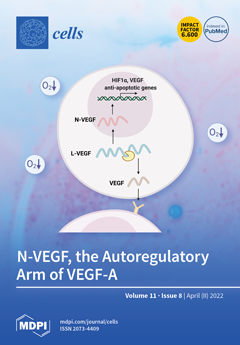Type III taste cells are the only taste bud cells which express voltage-gated (VG) Ca
2+ channels and employ Ca
2+-dependent exocytosis to release neurotransmitters, particularly serotonin. The taste bud is a tightly packed cell population, wherein extracellular Ca
2+ is expected
[...] Read more.
Type III taste cells are the only taste bud cells which express voltage-gated (VG) Ca
2+ channels and employ Ca
2+-dependent exocytosis to release neurotransmitters, particularly serotonin. The taste bud is a tightly packed cell population, wherein extracellular Ca
2+ is expected to fluctuate markedly due to the electrical activity of taste cells. It is currently unclear whether the Ca
2+ entry-driven synapse in type III cells could be reliable enough at unsteady extracellular Ca
2. Here we assayed depolarization-induced Ca
2+ signals and associated serotonin release in isolated type III cells at varied extracellular Ca
2+. It turned out that the same depolarizing stimulus elicited invariant Ca
2+ signals in type III cells irrespective of bath Ca
2+ varied within 0.5–5 mM. The serotonin release from type III cells was assayed with the biosensor approach by using HEK-293 cells co-expressing the recombinant 5-HT4 receptor and genetically encoded cAMP sensor Pink Flamindo. Consistently with the weak Ca
2+ dependence of intracellular Ca
2+ transients produced by VG Ca
2+ entry, depolarization-triggered serotonin secretion varied negligibly with bath Ca
2+. The evidence implicated the extracellular Ca
2+-sensing receptor in mediating the negative feedback mechanism that regulates VG Ca
2+ entry and levels off serotonin release in type III cells at deviating Ca
2+ in the extracellular medium.
Full article






